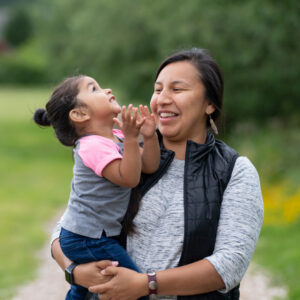Written By: Schane D. Coker, AFC, FFC, Doctoral Student at Florida International University
 Introduction
Introduction
Economic inequality disproportionately impacts U.S. racial and ethnic minorities. This disproportionate inequality has shaped how they view their current financial situations as well as how they set their household financial goals. Native Americans have historically been hindered from achieving economic well-being due to U.S. governmental policies on native lands. Average income is emblematic of financial disparities, with Native American families earning an average of $49,906, 30% less than white families (Asante-Muhammad et al., 2022a; Asante-Muhmmad et. al., 2022b; United States Office of Minority Health, 2022). Native American, Hawaiian, and Alaskan communities have been subjected to significant structural and historical injustices through forced removal from their native lands, and the reallocation of those lands for other purposes. This has resulted in them being purposely held back financially over time (Langholz, 2020). Adding to the damage that these historic injustices have inflicted upon Native American communities, a poll released by National Public Radio (NPR) in 2020 revealed that 55 percent of Native American households reported serious financial, food, and housing instability due to the COVID-19 pandemic (Saksa & Macagnone, 2020)
Summary of Findings
Native American communities are concerned with three major issues consistent with their experiences of inequality: 1) housing costs, 2) mental health challenges and well-being, and 3) unfair treatment (Woodrum, 2021). All of these problems have direct and indirect financial implications that continue to plague Native Americans and further disadvantage them as it relates to achieving financial independence. Financial capability within Native American communities remains among the lowest of all minority populations in the U.S. (Langholz, 2020). While there have been efforts put forth at every level of government to reduce the inequalities that Native American communities have been facing, there is still more that needs to be done and difficult conversations that have not yet been had.
Key Points, Impact, or Insights
First, as we serve this population and begin to have challenging conversations about individual financial realities, the situation may appear quite dim. The possibility of change may seem to be a long shot, but a “one step at a time” approach may be the best. Being overwhelmed does nothing for one’s mental health or well-being, and often focusing on too many issues at once forces the brain to shut down.
Secondly, it is important to understand cultural differences and financial values; what is important to some segments of our society may not be important to others. Perceived and objective financial well-being does vary significantly all across the U.S., including Native American populations. How a culture defines their own financial wellbeing is unique to them. Therefore, one important step in beginning these challenging conversations is to have clients define their own financial success and wellness. As counselors and coaches, we should support our clients with their vision of success in mind.
Lastly, we all know that it is difficult to ask for help. Additionally, we know that accessing actual help is another challenge on its own. One thing that we as counselors and coaches can do, is to survey our communities, identify barriers that prevent individuals from accessing help, and try to remove some of those systemic roadblocks to financial well-being. Moving from bystander to advocate is key!
Sources
Asante-Muhammad, D., Kamra, E., Sanchez, C., Ramierz, K., & Tec, R. (2022a, February 14). Racial wealth snapshot: Native Americans. National Community Reinvestment Coalition. https://ncrc.org/racial-wealth-snapshot-native-americans/
Asante-Muhammad, D., Sanchez, C., & Kamra, E. (2022b, March 8). ‘Reckoning’ with the economic marginalization of Native Americans. Institute for Policy Studies. https://ips-dc.org/native-americans-economic-marginalization/
Langholz, K. (2020, January 21). On financial literacy, slow gains in Native American lands. American Communities Project. https://www.americancommunities.org/on-financial-literacy-slow-gains-in-native-american-lands/
Saksa, J., & Macagnone, M. (2020, September 16). COVID-19 hits Latino, Black, and Native American wallets harder. Roll Call. https://rollcall.com/2020/09/16/covid-19-hits-latino-black-and-native-american-wallets-harder/
United States Office of Minority Health. (2022, January 11). Profile: American Indian/Alaska Native. United States Department of Health and Human Services. https://minorityhealth.hhs.gov/omh/browse.aspx?lvl=3&lvlid=62#:~:text=22%20percent%20of%20American%20Indians,percentage%20of%20any%20minority%20population.
Woodrum, J. (2021, November 3). What Native Americans are worried about right now. Pulse. https://www.copulsepoll.org/news/what-native-americans-are-worried-about-right-now
https://rollcall.com/2020/09/16/covid-19-hits-latino-black-and-native-american-wallets-harder/